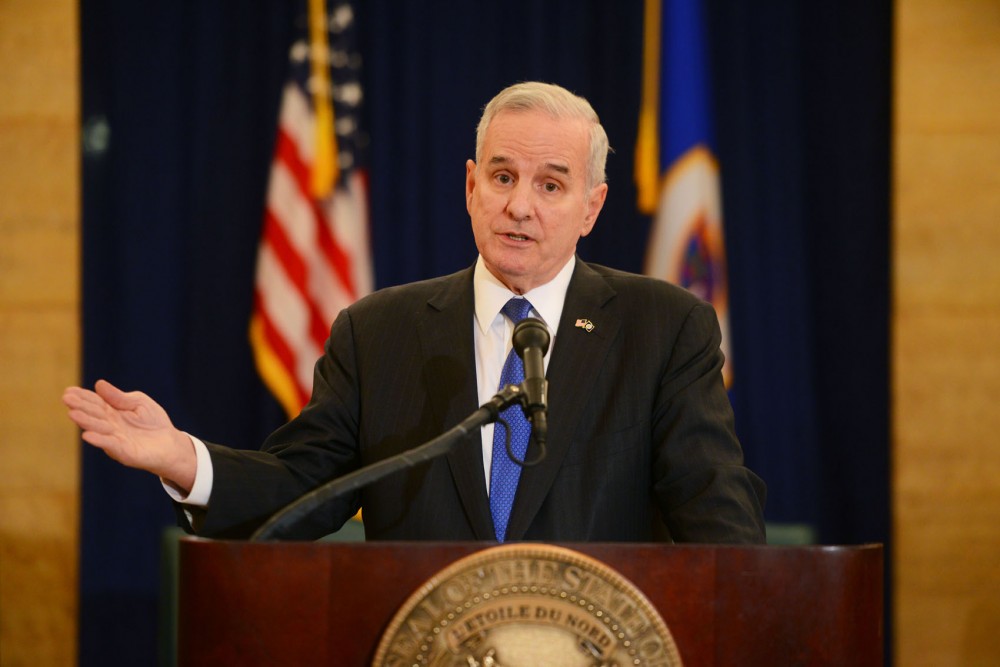State lawmakers in the House and Senate are split over when to tackle a bonding bill this year.
As the Minnesota Senate’s bonding bill continues to lie in wait, members of the House have yet to introduce their own version of the bill. When legislators return from spring recess April 18, there will only be about a month left in this year’s session. If lawmakers don’t pass a bonding bill before the session ends, funding for University of Minnesota capital projects and other state infrastructure needs will be shelved for the second straight year.
The Senate’s bonding bill passed through last month’s committee hearing and now awaits floor action. The bill contains roughly $81 million for University projects, including higher education asset preservation and replacement (HEAPR), a chemistry and advanced materials science building on the Duluth campus and a Twin Cities plant growth research facility.
The University requested $245.1 million in capital funding this session, while Gov. Mark Dayton recommended $154.7 million for the school in his January bonding proposal.
The Senate’s legislation is the same as the bill lawmakers failed to pass in the waning minutes of last year’s session, said Sen. Sandy Pappas, DFL-St. Paul.
But one key University project was left out, Pappas said.
“The concerns … for the U are not putting the health sciences building in,” she said. “That’s kind of a key core mission of the University is the medical school.”
Funding for the proposed health sciences building was included in Dayton’s $1.5 billion bonding recommendation.
University senior vice president for Finance and Operations Brian Burnett said he’s hopeful lawmakers will include the health sciences building in a final bonding bill.
It’s the school’s top priority, Burnett said. “It’s critical to the education of our medical school and all our … health sciences programs.”
Along with the University’s health sciences building, Pappas said she wants more funding for HEAPR and a Pillsbury Hall renovation in the Senate bill. The Minnesota Daily previously reported that Pillsbury Hall will be shuttered this fall without funding for the renovation.
“The Senate bill is short for the U of M,” she said.
But because bonding bills must originate in the House, the Senate can’t vote on its bill until the House sends over its version — which representatives have yet to introduce.
Rep. Dean Urdahl, R-Grove City, chair of the House capital investment committee, said the committee is waiting for a go-ahead from House Speaker Kurt Daudt before moving on the bill.
“I’ve got a spreadsheet and some ideas, but we have not been cleared for takeoff,” Urdahl said.
A bonding bill will likely be addressed after lawmakers finalize the state’s budget for the next biennium, he said.
“At some point I expect the bonding bill to be a part of the equation that brings about the end of session,” he said.
Rep. Raymond Dehn, DFL-Minneapolis, a member of the House capital investment committee, said the committee has held discussions on the potential bill, which would likely give less than the Senate’s.
“The discussion right now is, we’re probably looking at an $800 million bill this year and possibly an $800 million bill next year,” he said.
This means the University and other state projects may get considerably less funding than they requested, Dehn said.
University officials say bonding funding is needed soon to keep projects moving along.
Campus buildings depreciate each year, University Regent Richard Beeson said, so new HEAPR funding is needed to maintain them.
“Capital dollars are the economic equivalent to roads and bridges, in that they allow us to conduct our business efficiently and effectively,” Beeson said.
Brian Burnett said projects will grow more expensive if the Legislature puts off a bonding bill for the second year in a row.
“The sooner we can get them down… the less it will cost both the University and taxpayers,” Burnett said.
Sen. Dan Schoen, DFL-St. Paul Park, a member of the Senate’s capital investment committee, said the governor and Republican lawmakers will have to bridge ideological differences to pass a bonding bill this year.
But Gov. Dayton is in position this session to hold firm on his ideals, Schoen said, since he won’t be up for reelection.
“The governor is the one who gets to sign, to have it placed into law or to veto it,” he said. “That pen is pretty strong in comparison to all 201 legislators when … Dayton has the option to just say ‘no.’”








